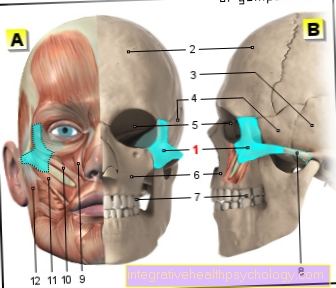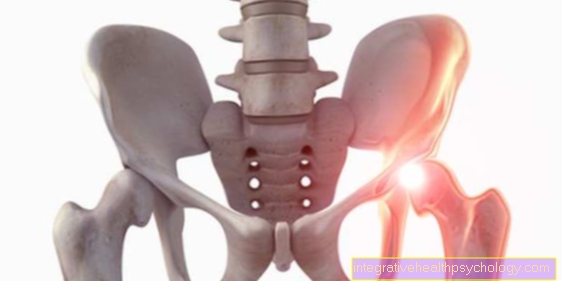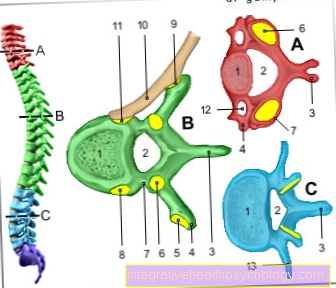Diagnosing COPD
Classification
The diagnosis of COPD is divided into four pillars. The pillars consist of:
- physical examination
- Collection of laboratory parameters
- Pulmonary function test
- Imaging procedures

Physical examination
The diagnosis begins with a conversation (anamnesis) about the symptoms, followed by a detailed physical examination by the doctor. This clinical examination for chronic obstructive pulmonary disease (COPD) includes, among others eavesdropping with the stethoscope, palpation and tapping.
- With pulmonary flatulence, tapping produces a knocking sound (hypersonic), which differs significantly from a healthy sound (sonorous). The mobility of the lung borders during breathing is reduced and noises may occur when listening.
- When listening to the lungs with a stethoscope, the doctor may hear abnormal breathing noises while breathing in the lungs. Particular attention is paid to rustling noises caused by the mucus formation from this disease. Furthermore, attention is paid to dry noises. These can take the form of a hum or whistle. Such noises arise when the airways are narrowed. The air accumulates in front of the bottlenecks. So if you can hear such sounds, the disease is more advanced. In addition, the breathing sounds are much weaker than in a healthy person.
Laboratory diagnostics for COPD
People with COPD show increased mucus production. This slime is examined more closely in the laboratory.
Analyzes of the blood composition are also carried out. Serum electrophoresis can be used if a less common cause is suspected, e.g. with alpha-1 antitrypsin deficiency. Serum electrophoresis is a COPD method that separates blood proteins in an electric field in order to obtain a more precise composition of these blood proteins. In a blood gas analysis (BGA) Finally, the gas transport and gas content are assessed.
Learn more about: Alpha-1 antitrypsin
COPD - pulmonary function test
If there is only simple chronic bronchitis, the changes are usually only discreet. If the chronic obstructive pulmonary disease is already characterized by a narrowing, the lung function test reveals changes such as a reduced one-second capacity FEV1.
This parameter is recorded by the person concerned inhaling maximally and then exhaling as quickly as possible. The respiratory gas volume that is exhaled within one second is the one-second capacity and is recorded by a special measuring device. If the airways are narrowed, the volume is consequently reduced during this measurement. There is also increased resistance. It is understood as the breathing resistance that has to be overcome when breathing. Besides other factors, it depends on the geometry of the airway, i.e. the diameter of the lumen.
Imaging procedures
There are various imaging methods that can be used to diagnose COPD.
- In order to get an overview and to rule out other diseases, an X-ray of the chest is made, whereby a change can only be recognized in about half of those affected. The doctor can identify the irreversible enlargements of the bronchioles and the alveoli that are connected to them. Furthermore, it is possible to see a deep diaphragm with the help of the X-ray image. The x-ray of COPD is also more translucent than that of healthy lungs. This is because there is less lung tissue. To be excluded are e.g. pneumonia, tuberculosis, inhaled foreign bodies or malignant tumors (tumor), all of which can also cause a chronic cough.
- Computed tomography is also popular as a diagnostic method for COPD. The normal x-ray of the lungs is supplemented by this special x-ray procedure. This procedure enables an even more detailed look into the lungs. It is now shown in two-dimensional slices. A computer puts these slices together in three dimensions, giving the doctor a spatial impression of the lungs. The lungs and their pathological changes are shown without overlapping. So there is no tissue covered by overlying tissue on the receptacle. Therefore, tissue damage or pathological changes can be seen much better than with an X-ray.
- The recording of the electrical activity of the heart in an EKG can give indications of a strain on the heart caused by a lung disease (cor pulmonale).
- An MRI of the lungs can provide additional clues about the extent of the COPD.
- Bronchoscopy, also known colloquially as a lung specimen, enables the doctor to look into the windpipe and its large branches (bronchi). This allows the mucous membrane to be examined more closely. This makes it easier to diagnose COPD. A tube (bronchoscope) about the thickness of a pencil, which is flexible, is pushed through the mouth or nose into the airways. At the end of the hose there is a video camera and a light source. The camera transmits all image signals to a monitor, which the doctor looks at. In addition to looking at and examining the lungs, it is also possible to take tissue samples thanks to the bronchoscope.


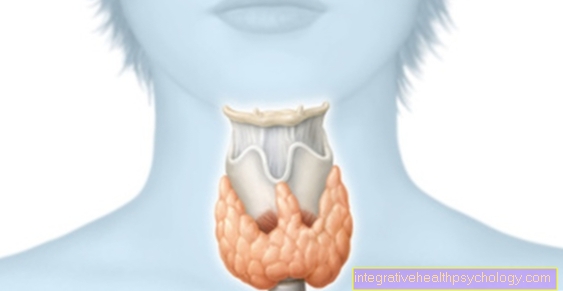
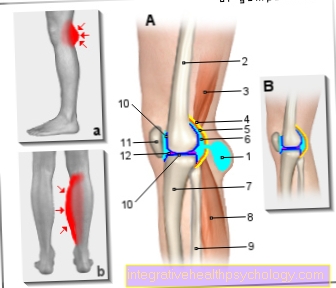



.jpg)
